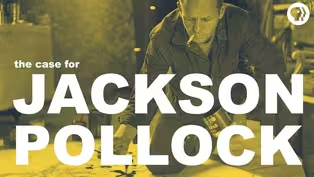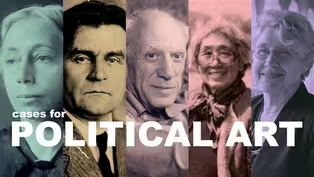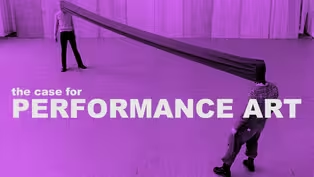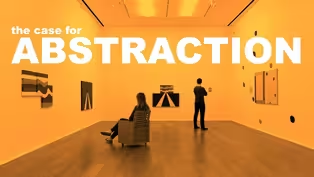
The Case for Museums
Season 4 Episode 26 | 8m 28sVideo has Closed Captions
What purpose did museums serve? And why does every city have one today?
The powerful and privileged have hoarded precious artifacts in museums for centuries, and it's only recently that these treasures were made available to the rest of us. What purpose did museums serve? And why does every city have one today?
Problems playing video? | Closed Captioning Feedback
Problems playing video? | Closed Captioning Feedback

The Case for Museums
Season 4 Episode 26 | 8m 28sVideo has Closed Captions
The powerful and privileged have hoarded precious artifacts in museums for centuries, and it's only recently that these treasures were made available to the rest of us. What purpose did museums serve? And why does every city have one today?
Problems playing video? | Closed Captioning Feedback
How to Watch The Art Assignment
The Art Assignment is available to stream on pbs.org and the free PBS App, available on iPhone, Apple TV, Android TV, Android smartphones, Amazon Fire TV, Amazon Fire Tablet, Roku, Samsung Smart TV, and Vizio.
Providing Support for PBS.org
Learn Moreabout PBS online sponsorshipMore from This Collection
Video has Closed Captions
We explore the life, evolution, and legacy of Jackson Pollock. (10m 30s)
Video has Closed Captions
This week we explore some of the most powerful artworks ever made. (12m 7s)
Video has Closed Captions
Ai Weiwei has been called an iconoclast, a radical, a voice for the voiceless... (5m 53s)
Video has Closed Captions
Dubious of performance art? Break into a cold sweat when you realize it’s about to begin? (9m 9s)
Video has Closed Captions
How are we supposed to deal with art completely removed from recognizable objects? (9m 17s)
Providing Support for PBS.org
Learn Moreabout PBS online sponsorshipNARRATOR: For centuries, we humans have put the stuff we value into safe houses and locked it away-- historical artifacts, precious metals, biological specimens, and some art, too.
This was mostly done by the powerful and privileged-- those who had or stole stuff valuable enough to try to save.
But they mostly kept it to themselves, and it was only pretty recently that such treasures were made available to the likes of us.
Now it seems every city must have one, if not several, of these public storehouses for allegedly nonfunctional objects.
Why do we need these?
And why should we visit them not just once, but again, and again, and again?
This is the case for museums.
The word comes from the Greek mouseion, or seat of the muses, referring to places like the ancient museum at Alexandria, which housed manuscripts and was more like a modern-day library and university.
The Latin derivation, museum, described for ancient Romans places for philosophical discussion.
Now, there was certainly art at the time, but it was paintings honoring the gods housed in pinacotheca on the Acropolis or sculpture on public display in Rome.
And of course, the wealthy had art in their homes, just as they do today.
But as far back as we can trace, people have treasured and hoarded objects.
We know that from what early humans buried with them and wanted to take into the afterlife.
There's evidence that Babylonian King Nabonidus collected antiquities, and it seems that his daughter created a kind of educational museum where clay cylinders described those antiquities-- the very first wall labels, let's say.
During the Italian Renaissance, the Medici's amassed an enormous collection, which they eventually gave to the state as a public good.
National museums sprang to life in Europe in the 18th century as the wealthy gave up their collections to be preserved and shared after their deaths.
Revolution forced the opening of the French Royal Collections to the public.
Collecting stuff is and always has been complicated.
Be they trophies of war or conquest, objects of worship, exotic curiosities, or even recently completed paintings, the objects that populate our museums have been removed from their original context-- wrested from the individuals, and communities, and civilizations that birthed them.
Tracing an object's provenance, or its history of ownership, is murky business and the subject of many court cases, necessitating the return of cultural heritage and private property decades or even centuries after it was looted.
But it's precisely these complications that make museums relevant.
They may be full of decontextualized, problematic objects, but museums uphold the charge of not only keeping these things safe, but recontextualizing them in novel and enlightening ways, making them available to us for enjoyment and study, and returning them to their rightful owners when called for.
Being stewards of these objects means experimenting with their classification, their description, their juxtaposition with things similar and dissimilar.
How we display things has shifted over the centuries.
From the tightly-packed arrangement of natural specimens and miscellany in the Wunderkammers, or cabinets of curiosity, of 16th and 17th century Europe, to paintings hung salon-style in the grand galleries of the Louver in the 19th century, and all the way to now, when the near-ubiquitous white cube is the display convention of choice.
And technology has transformed how we learn about what we're seeing.
The style of building we store treasures in has evolved as well-- from pyramids and classical structures, to neoclassical structures-- lots, and lots, and lots of neoclassical structures-- and classical structures with glowing cubes next to them, and pyramids next to them.
Some of our museums are circular.
Some are whatever kind of shape this is.
Some of them float.
But what museums do is bring us into contact with the things that those before us have made, and used, and valued.
Philosopher Georges Didi-Huberman wrote in 2003 that, "In each historical object, all times encounter one another, bifurcate, or even become entangled with each other."
Things in museums can give us clues as to what it was like to be a particular person in a particular place at the particular time they were made.
But they can also provide us access to other temporalities-- to each moment since the object's creation when it was altered, sold, changed hands-- when it entered the collection, and when it has and has not been on display.
Museums are sites where we can visibly see the negotiation of values-- what they are now, what they used to be, and what we hope they'll be in the future.
It's in these places that we can revisit and revise histories, give platforms to marginalized voices, and resurrect narratives of the oppressed.
That its contents can be shuffled around in endless combinations or stay the same for years and years makes tangible that history isn't a cold, dead thing, but is always contested and in flux-- not a singular line running backward, but a dense and multi-dimensional tangle.
Governed by mission statements that vary in specificity and scope, fueled by coffers that range from obscene to non-existent, museums are vulnerable to a host of influences and threats-- the fluctuating interests of leadership and boards of directors, the vicissitudes of public funding, the unpredictable allotment of private funding, grants, and sponsorships.
Tasked with making their collections available to the public, museums make tough, sometimes reckless decisions to keep the lights on, salaries paid, and attendance flowing, but they must always be held to task.
Who are the publics being served?
And can a place be counted as public when it costs that much to get in?
What museums do for us that non-collecting for- and not-for-profit institutions don't is make a commitment that they will take care of these objects for pretty much ever.
When sea levels rise and forest fires loom, it's teams of museum nerds like these that put disaster plans into action.
Less dramatically, it's conservators who try to prevent things from falling apart and restore dingy works to past glory.
Highly trained people guard the objects, pack the objects, and expertly install and deinstall them.
Careers are spent studying objects, generating exhibitions around them, and using them to tell stories about past and present.
The research that comes out of museums benefit society in direct ways, giving us insight into the past and future of the world we inhabit.
Loads of people, many of them volunteers, work to share the collection with you and figure out ways to share it with you even if you can't get there yourself.
These may be hoards of goods that once belonged to rich people presented in flawed ways, but they may be all that's left after the asteroid hits and future intelligent life forms try to piece together what the heck happened.
And let's be clear, museums are not lean-back entertainment.
Sure, you can sit yourself down and be bowled over by that epic history painting, letting its magnificence vibrate out and penetrate your jaded, image-soaked consciousness.
But the real value of museums lies not in their ability to anesthetize us with beauty, but in their power to make us active agents in reconsidering our histories, understanding where we are now, and what we might be able to do to change what happens next.
This work happens not in the art itself or in the wall labels, but inside our heads.
They can't spoon-feed you transcendence, but it's there if you're curious, patient, and do the work.
A museum turns out to be more like a university or library after all, and that's also why it's worthwhile to return again and again.
Even if the museum doesn't change much, you change, and what you notice changes.
When museums and the things that contain don't meet our expectations, we get angry.
We imbue these places with authority and trust them with our cultural heritage, and it's upsetting when they don't reflect our histories or experience of the world.
But while they might look like impenetrable fortresses, they are not.
You can get the training to work in these places.
You can jockey to join the board.
You can give your treasured objects to help them tell better stories.
Most importantly, you can shape the conversation that surrounds museums, make demands that they be better, and be the vocal and engaged public these places were founded to support.

- Science and Nature

A series about fails in history that have resulted in major discoveries and inventions.













Support for PBS provided by:






